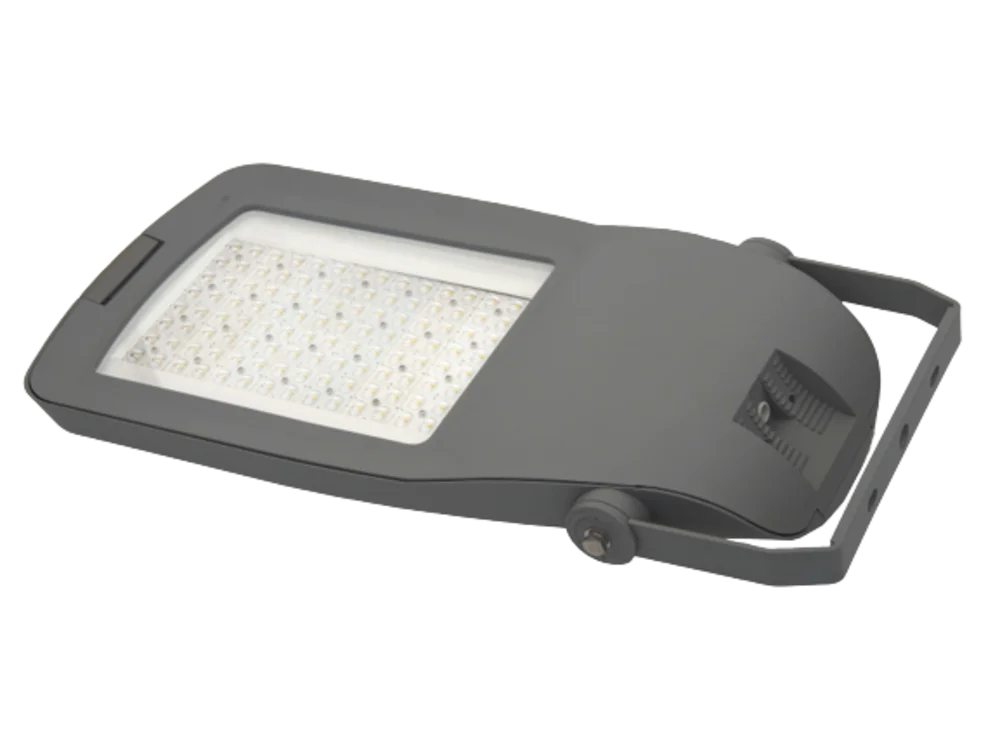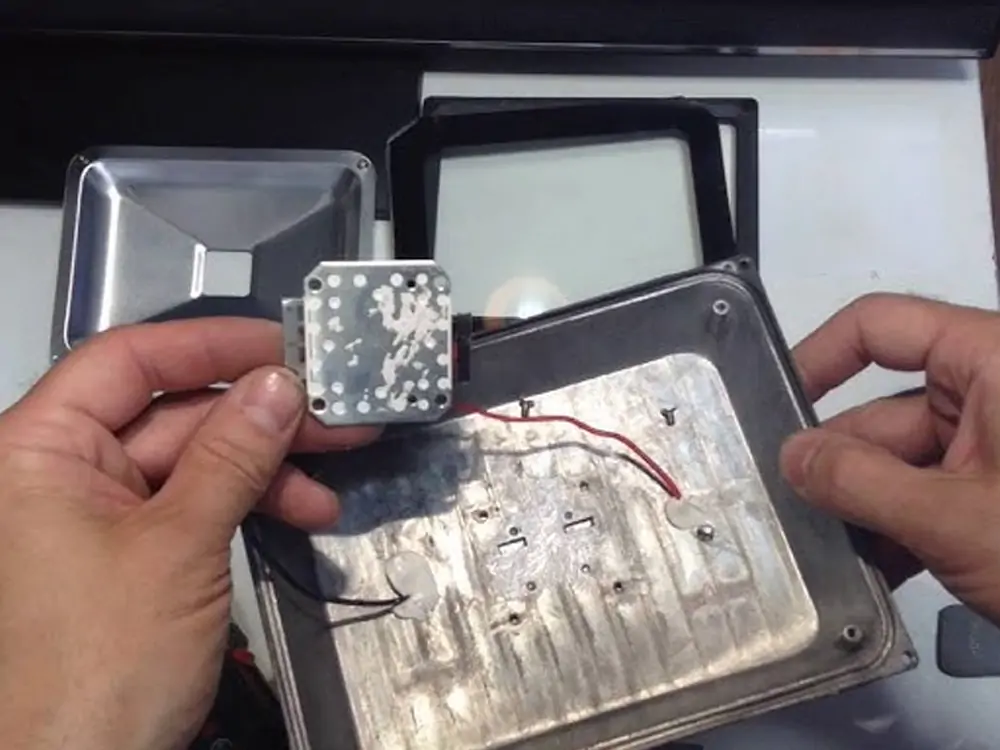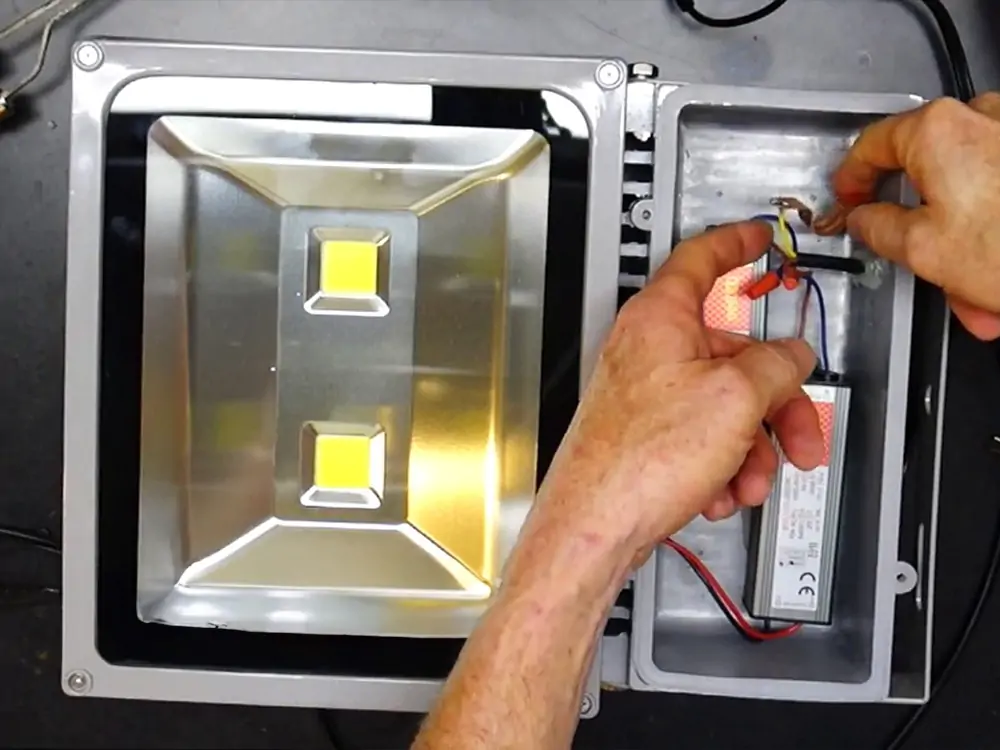Changing flood light bulbs may seem daunting, but it is easy with the proper guidelines. Flood lights are used to illuminate vast outdoor areas, improve one’s security, and provide appropriate lighting for various activities. If your flood lights are for security purposes, landscaping, or even sporting activities, knowing how to change them will ensure continuous light provision. This post will go through all the steps for safely and effectively changing flood light bulbs. With a few simple tools and precautions, your lights will shine again.
What are Flood Light Bulbs?
Flood light bulbs are a specialized type of lighting fixture intended to generate a concentrated and potent discharge of light that can be directed at a particular location. They are designed to disperse light over a broad spectrum, making them suited for illuminating expansive outdoor areas and improving visibility.
Why We Need to Change Flood Light Bulbs?
Burnout and Dimming:
Flood light bulbs can burn out or become dim over time, reducing their effectiveness. Replacing them ensures that your space is safe.
Energy Efficiency:

Older flood light bulbs, especially incandescent or halogen, consume more energy than modern LED bulbs. Changing to LED bulbs can reduce energy consumption and lower electricity bills.
Safety and Security:
Proper lighting is essential for safety and security, especially outdoors. Ensuring your flood lights are working can deter prospective intruders and reduce the risk of accidents.
Advancements in Technology:
Another reason for changing flood light bulbs is the advancement in technology. Lighting technology keeps improving. You will add special features like smart controls and better environmental performance with newer bulbs.
Light Quality:
Newer lamps usually provide better light quality, color rendering, and luminous flux. It improves the visibility of the scene and the general ambiance of the illuminated place.
How to Change the Flood Light Blub?
Safety Precautions:
First, safety is a consideration before changing flood light bulbs. One should ensure power is turned off to prevent electric shock. If the light is mounted high, one will use a ladder. Secure the ladder on stable ground to avoid falls. Gloves are used to protect your hands from sharp edges on the fixture. Allow the bulb time to cool off if it has been running recently. Use proper tools to avoid damaging the fixture.
Get All Your Materials and Supplies:
Before starting the process, ensure all the tools and materials are available. You will need a new bulb that is compatible with your fixture. Make sure that you have a screwdriver if there are screws to remove from the bulb holder. Use a cloth or gloves to hold onto the new bulb. Of course, if the fixture is high, you need a ladder. Also, have a flashlight handy for more light.
Remove the Old Bulb:

Before changing flood light bulbs, remove the old bulb from the fixture. Remove any cover or screws with a screwdriver. Hold the bulb, twisting it counterclockwise; that should loosen it. If the bulb is stuck, wiggle it to free it. After loosening, pull the bulb out of the socket. Dispose of the old bulb according to local regulations.
Inspect the Fixture:
Check the fixture for damages or wear. Look for cracks or loose parts that need fixing. The socket should be clean and free from dust. If you encounter any complications, it would be good if you could repair or replace the fixture. A maintained fixture will give you a longer bulb life and improve performance.
Install New Bulb:

Handle the new bulb to avoid scratching it. Align the new bulb with the socket, then push it in. Twist the bulb clockwise until it’s securely seated. Ensure that the bulb is not overtightened; doing so will cause it to break. Replace any covers or screws you removed earlier. Make sure everything is secure before testing the light.
Test the New Bulb:
Now, turn the power back on to test the new bulb. Check if the light turns on and it is working well. If the light does not work, check the installation again. Make sure the bulb is seated in the socket. If it still doesn’t work, there must be something wrong with the fixture. You need to contact a professional if need be.
Clean Up:
Clean up after replacement. Dispose of all the packaging material. Put away all tools. Check that your ladder is folded and pushed out of the way. Ensure everything is tightened; no screws or other parts are lying loose. A clean working space means safety and an area ready for action.
Troubleshooting Tips
Color Mismatch:
For any discrepancies in color temperature, verify the LED bulb’s Kelvin rating. Choose a bulb compatible with the illumination environment you wish to create. Check various color temperatures until you find the one that aligns with your preferences.
Inadequate Brightness:
If the brightness is insufficient, ensure that the LED bulb’s lumens are equal to or greater than the recommended luminosity for your illumination. Selecting a higher lumen output can achieve the intended illumination.
Avoid allowing obstructions or dirt to accumulate on the bulb, as this could diminish its light intensity.
Bulb Flickering or Not Turning On:
Issues with compatibility with a dimmer switch are indicated if the LED bulb fails to illuminate or flickers. Double-check whether your floodlight is compatible with LED bulbs that can be dimmed. If it does, verify that the dimmer is compatible with LED technology.
Verify that the LED bulb is seated in the receptacle. If the problem persists, it is beneficial to seek the advice of a professional electrician.
Conclusion:
Changing flood light bulbs is a simple process that gives you safety and functionality outdoors. Replace old bulbs or those that have already vanished to keep them running at full capacity. Follow these easy steps to change the flood light bulbs; your property will always be well-lit. Remember that when you start replacing the bulbs, safety comes first. Always remember to turn off the power to protect bulbs from breakage. You can get bright, reliable illumination whenever needed with the best flood lights.
